Craving something sweet but don’t want to wreck your keto goals? You’re in the right place. This guide serves up 20 Keto-Friendly Low-Carb Dessert Recipes (Under 8–10g Net Carbs) that actually taste indulgent — think creamy no-bake cheesecakes, chocolate fat bombs, scoopable keto ice cream, and tiny show-stopping tarts — all with smart swaps and clear net-carb math so you can enjoy dessert without the guesswork.
Why you’ll love this list: each recipe is built around real food (nuts, cream, eggs, cocoa) and low-impact sweeteners (erythritol, allulose, monk fruit blends), portioned for real life — not giant slices that blow your carb budget. Whether you’re a keto newbie or a veteran who wants better texture and fewer surprises, you’ll find fast fixes for soggy crusts, icy ice cream, and gritty sugar substitutes. Plus: tiny serving tricks to keep your daily carbs in check while still feeling spoiled.
Expect step-by-step swaps, topping ideas, and troubleshooting notes that actually work. Curious which dessert to try first? Keep scrolling — your new favorite low-carb treat is one away.
Why keto desserts are totally doable (and why net carbs matter)
Yes, you can have dessert on keto. No, it won’t automatically ruin your progress. The trick is picking desserts built around fat and low net carbs, and understanding what “net carbs” actually means. This guide gives you 20 dessert ideas that all land roughly under 8–10 g net carbs per serving (with smaller bites and portion control helping you stay in range). It also explains the net-carb math, which sweeteners are safely subtracted, and how to swap ingredients for better texture and flavor.
Why care about net carbs? Because most people on a ketogenic or low-carb diet track the digestible carbs that affect blood sugar, not every carb on the label. That’s usually calculated as total carbs minus fiber, and sometimes minus certain sugar alcohols — but there’s nuance here, so let’s unpack it. (1, 2)
Keto desserts explained — net carbs, sugar alcohols & portioning.
Keto desserts are built around two simple ideas: keep digestible carbs low, and keep fat high enough to make the treat satisfying. That sounds easy — until you hit food labels, sugar substitutes, and serving sizes. Below, I break down what net carbs really mean, how different sugar alcohols behave, how to calculate per-serving net carbs reliably, and extra precautions for people with diabetes or sensitive glucose.
What are net carbs? (how to calculate them, and why people use them)
Short answer: Net carbs = Total carbohydrates − Fiber (and sometimes − certain sugar alcohols).
That formula tries to reflect only the carbs your body can digest and that are likely to raise blood sugar. Many keto followers use net carbs because fiber passes through the gut largely undigested and doesn’t raise glucose the way starches and sugars do. However, there is no official FDA definition for “net carbs,” so practices vary, and you should be cautious when a product advertises “net carbs.”
Example (digit-by-digit math):
- Nutrition label: Total carbs = 20 g, Fiber = 5 g.
- Net carbs = 20 − 5 = 15 g net carbs per serving.
Some people also subtract sugar alcohols (see next section). Because labeling rules differ worldwide and the FDA hasn’t standardized “net carbs,” if you need precise control (e.g., diabetes, tight ketogenic goals), be conservative and track carefully. (3)
Why do people use net carbs?
- To estimate the digestible carbohydrate load of a food.
- To keep within daily carbohydrate limits while still enjoying real foods and occasional treats.
- To compare recipes and portion sizes more meaningfully than “total carbs” alone. (4)
Sugar alcohols: which to subtract, which to count, and GI differences
Quick primer: Sugar alcohols (erythritol, xylitol, maltitol, sorbitol, mannitol, etc.) are sweeteners that are partially absorbed and metabolized differently from table sugar. Their effects on blood sugar vary a lot — so treat them individually rather than lumping them together. (5)
Rule-of-thumb for labeling/counting
- Erythritol: often subtracted 100% from total carbs by keto trackers because it is mostly absorbed and excreted unchanged in urine and produces a negligible blood-glucose response in most studies. Many keto recipes assume erythritol contributes ~0 net carbs. (6, 7)
- Allulose: behaves much like erythritol in glycemic effect and is often subtracted (and favored in ice creams/baking because it browns and remains soft). (See studies/baking guides for specifics.) (8)
- Xylitol: low glycemic index (~7) and usually counted less aggressively (some subtract, some partially subtract); it’s generally considered safer for blood sugar than sugar, but can cause GI upset in large amounts and is toxic to dogs. (9, 10)
- Maltitol: has a higher glycemic index than other sugar alcohols and can raise blood sugar more; many keto followers do not fully subtract maltitol and often avoid it for strict ketogenic control. (11, 12)
Digestive effects
Sugar alcohols can cause bloating, gas, and laxative effects in some people — maltitol and sorbitol are common culprits at higher doses. Erythritol is generally better tolerated, but everyone’s gut is different. If you or your readers have IBS or sensitive digestion, warn them to try small amounts first. (13, 14)
Practical counting rules you can use in recipe cards
- If the product lists erythritol (or pure erythritol/allulose): subtract it fully from total carbs for a net-carb figure.
- If the product uses xylitol or sorbitol, either subtract partially (conservative approach: subtract 50%) or count fully if you want to be safe. (15)
- If the product contains maltitol, do not subtract it (or subtract only a small portion) — treat it more like starch/sugar for net-carb purposes.
Always show readers the calculation you used (example: “Net carbs = total carbs − fiber − erythritol”) so they can re-calculate differently if they prefer.
Serving sizes, portioning, and “per-serving” math
Serving size is everything when it comes to desserts. A “keto brownie” that’s 6–8 g net carbs per small square becomes 18–24 g if someone eats three big squares.
How to scale recipes & label servings
- Decide on your target per-serving net carbs upfront (e.g., 5 g). Work backward when portioning the finished product. If your whole pan yields 40 g net carbs total, cut it into 8 even squares → 40 ÷ 8 = 5 g net carbs per square. (Digit-by-digit: 40 ÷ 8 = 5.)
- Use weight, not eyeballing: weigh the finished batch, divide by serving count to get uniform portions. That reduces reader confusion and returns more accurate nutrition math.
- Label servings clearly: “Makes 12 mini tarts — 1 tart = 3.2 g net carbs.” Always include the exact yields used in the calculation. (16)
Labeling tips for recipe cards
- Show both: ingredient-level net carbs (if you compute them) and the final per-serving net carb number with the math shown.
- Note any assumptions (e.g., “Net carbs calculated by subtracting fiber and erythritol from total carbs; other sugar alcohols counted fully.”)
- Offer a smaller portion option in the recipe (e.g., serve as mini cups or cut into 12 instead of 8) so readers can tailor toward stricter carb budgets.
Apps & calculators readers trust
Recommend apps like Carb Manager or MyFitnessPal for logging and net carb tracking — they automatically apply your chosen net-carb rules and can barcode-scan commercial ingredients. (Tip: Carb Manager specifically supports net-carb modes for keto users.) (17, 18)
Practical tracking tips for people with diabetes / sensitive glucose
If a reader has diabetes or is insulin-sensitive, the conservative approach is best — assume carbs count unless proven otherwise by testing. Here’s a short, practical checklist you can include in your article:
- Test-and-learn: If possible, use a glucose meter to test before and 1–2 hours after a new dessert to see its real effect. Track the recipe variation and serving size. (19)
- Be cautious with sugar alcohols: If the product contains maltitol or a sugar alcohol blend, count more carbs or test first — maltitol can cause a rise in blood sugar. Consider subtracting only erythritol and allulose by default.
- Portion control: Prefer mini portions or “fat-bomb” sized servings. Smaller servings lower the glucose load and are easier to factor into a daily carb allowance.
- Avoid ‘stacking’ carbs: Don’t pair a dessert with a high-carb beverage or big carb meal. Spread carbs across the day rather than in one sitting when possible.
- Talk to a clinician: People on insulin or certain diabetes meds may need dose adjustments or tailored advice before trying new sweeteners or recipes. ADA guidance emphasizes that nutrition labels don’t specify types of sugar alcohol — which complicates dosing decisions — so professional input is smart.
20 Keto-friendly low-carb dessert recipes (with net-carb counts & topping ideas)
Below are 20 keto dessert mini-profiles — grouped by type. Each recipe section includes a short blurb, approx. Net carbs per serving, a quick ingredients list, swap suggestions, topping ideas, and a one-line troubleshooting tip. Use these as recipe-card kernels you can expand into full step-by-step recipes.
No-bake cheesecakes & cheesecake spins
1. Classic no-bake keto cheesecake — Approx. 4 g net carbs per serving (1 slice, 1/8 of 8″ pan)
- Blurb: Silky, tangy cream-cheese filling on a thin almond-flour crust — no oven needed and perfect for summer. Great for beginners.
- Quick ingredients: cream cheese, heavy cream, powdered erythritol or monk fruit blend, vanilla extract, blanched almond flour, melted butter, pinch of salt.
- Notes on swaps: Swap almond flour crust for crushed toasted pecans (nutty flavor) or seed crust for a nut-free option. Use allulose for a softer, less grainy finish.
- Topping suggestions: Sugar-free berry compote (small portion), lemon zest, crushed toasted almonds.
- Troubleshooting (one line): If the filling is runny, chill 2–4 hours or add 1–2 tsp gelatin (bloom first) and re-set.
2. Lemon cheesecake fat-bomb cups — Approx. 1–2 g net carbs per cup
- Blurb: Tart lemon + creamy fat bomb texture — pops of citrus with a low carb footprint. Ideal as a grab-and-go treat.
- Quick ingredients: cream cheese, softened butter or coconut oil, lemon zest (and a little juice), powdered erythritol, lemon extract (optional).
- Notes on swaps: Use coconut oil for dairy-free (flavor will be coconut-forward). Reduce juice to keep carbs low.
- Topping suggestions: Micro-zest of lemon, tiny sprinkle of freeze-dried strawberry powder.
- Troubleshooting: If too firm after freezing, let it sit 2–3 minutes at room temperature to soften before eating.
Fat bombs & cheesecake-style bites
3. Chocolate peanut-butter fat bombs — Approx. 1 g net carb each (small bite)
- Blurb: Dense, chocolatey bites with a peanut-butter center — ultra-portable and satisfying for cravings.
- Quick ingredients: natural peanut butter (no sugar), coconut oil or butter, cocoa powder, erythritol or monk fruit, vanilla.
- Notes on swaps: Use almond butter for lower insulin response; sunflower seed butter for nut-free.
- Topping suggestions: Tiny sea salt flakes, crushed roasted peanuts (very small pinch).
- Troubleshooting: If the texture is greasy, reduce coconut oil slightly or chill longer; store in fridge, not warm car.
4. Strawberry cheesecake fat bombs — Approx. 1–2 g net carbs each
- Blurb: Cheesecake flavor in miniature — real strawberry flavor without the sugar hit.
- Quick ingredients: cream cheese, butter, powdered erythritol, freeze-dried strawberry powder (minced), lemon zest.
- Notes on swaps: Fresh strawberries add carbs — use freeze-dried powder for flavor with low carbs.
- Topping suggestions: Dust with extra freeze-dried powder or tiny mint leaf.
- Troubleshooting: If too sweet, reduce powdered sweetener by 10–20%.
Chocolate treats & truffles
5. Easy keto chocolate bombs — Approx. 1 g net carb per bomb
- Blurb: Molded dark chocolate shells filled with ganache or nut butter — dramatic and low carb.
- Quick ingredients: 90%+ unsweetened chocolate or cocoa butter, allulose or erythritol chocolate coating, heavy cream, cocoa powder, and optional peanut butter filling.
- Notes on swaps: Use cocoa butter + cocoa powder for a vegan shell; allulose keeps the shell smoother.
- Topping suggestions: Cracked sea salt, cocoa nibs, tiny gold dust for show.
- Troubleshooting: If shell blooming occurs (white streaks), temper chocolate properly or cool slowly in the fridge.
6. Low-carb chocolate mousse — Approx. 2–3 g net carbs per ramekin
- Blurb: Light, airy, and intensely chocolate — ready in minutes with whipped cream and cocoa.
- Quick ingredients: heavy whipping cream, unsweetened cocoa powder, powdered erythritol/allulose, vanilla, pinch of salt.
- Notes on swaps: Add ricotta or mascarpone for a thicker, more custardy mousse.
- Topping suggestions: Whipped cream swirl and a dusting of cocoa powder.
- Troubleshooting: If grainy, blend briefly with an immersion blender to smooth and re-whip.
Brownies & bars
7. Fudgy almond-flour brownies (low sugar alcohol) — Approx. 3–6 g net carbs per small square
- Blurb: Fudgy center, slightly crackly top — almond flour and cocoa make a dense brownie that keeps carbs low.
- Quick ingredients: blanched almond flour, unsweetened cocoa powder, eggs, butter, allulose or erythritol (blend recommended), baking powder, vanilla.
- Notes on swaps: Use a bit of coconut oil for a fudgier bite; reduce erythritol and use allulose to avoid grittiness.
- Topping suggestions: Thin peanut-butter swirl or a dusting of powdered allulose.
- Troubleshooting: If crumbly, add one extra egg yolk to increase moisture and binding.
8. Keto lemon bars (with almond crust) — Approx. 4–6 g net carbs per bar
- Blurb: Bright lemon curd on an almond crust — tangy without sugar. Perfect for spring.
- Quick ingredients: almond flour, butter, eggs, lemon zest + small amount lemon juice, powdered allulose, xanthan (tiny pinch, optional).
- Notes on swaps: Use a seed crust (pumpkin seeds + sesame) for nut-free; reduce lemon juice to cut carbs.
- Topping suggestions: Light dust of powdered erythritol or a thin strip of lemon zest.
- Troubleshooting: If the curd doesn’t set, bake a few minutes longer at a lower temperature and cool completely before cutting.
Cookies & quick bakes
9. Low-carb chocolate chip cookies (almond flour) — Approx. 3–5 g net carbs per cookie
- Blurb: Classic cookie texture using almond flour and sugar-free chips — crisp at edges, tender center.
- Quick ingredients: almond flour, butter, egg, baking soda, vanilla, sugar-free chocolate chips, erythritol or monk fruit blend.
- Notes on swaps: Use nut butter for a chewier cookie; add 1 tbsp ground flax if you want more structure.
- Topping suggestions: Sprinkle flaky sea salt before baking.
- Troubleshooting: If too spready, chill dough 20–30 minutes before baking.
10. Peanut butter cookies (1-ingredient type) — Approx. 2–3 g net carbs per cookie
- Blurb: The famous “1-ingredient” keto cookie — simple, fast, and satisfying.
- Quick ingredients: natural peanut butter (no sugar), egg, optional powdered sweetener, and vanilla.
- Notes on swaps: Swap almond butter for lower-carb variants; watch the label on nut butters (added sugars).
- Topping suggestions: Press a single sugar-free chocolate chip or flake of sea salt on top.
- Troubleshooting: If the dough is too wet, add 1–2 tbsp almond flour; if too dry, stir in a splash of cream.
Ice creams & frozen desserts
11. Keto vanilla churned ice cream (allulose sweetener) — Approx. 4–6 g net carbs per 1/2 cup
- Blurb: Rich, creamy churned ice cream that scoops well — allulose helps prevent iciness and keeps texture soft.
- Quick ingredients: heavy cream, whole milk or half-and-half (small amount), egg yolks (custard base), allulose, vanilla bean or extract.
- Notes on swaps: For dairy-free, use full-fat coconut milk and reduce allulose slightly.
- Topping suggestions: Crushed toasted pecans, sugar-free caramel drizzle (sparingly).
- Troubleshooting: If icy, churn with more fat (add 1–2 tbsp cream) or use a bit more allulose to depress the freezing point.
12. Chocolate avocado ice cream (no-churn) — Approx. 3–5 g net carbs per 1/2 cup
- Blurb: Simple blender ice cream: avocado for creaminess, cocoa for a chocolate fix — no machine required.
- Quick ingredients: ripe avocado, cocoa powder, heavy cream or coconut cream, allulose or erythritol, vanilla.
- Notes on swaps: Add a splash of coffee for mocha flavor; use coconut cream for a vegan version.
- Topping suggestions: Crushed roasted hazelnuts or a few cacao nibs.
- Troubleshooting: If the texture is too soft after freezing, thaw 8–10 minutes at room temp before scooping.
Puddings, custards & parfaits
13. Keto chocolate chia pudding (chia + erythritol) — Approx. 3–4 g net carbs per serving
- Blurb: Fiber-rich chia pudding that thickens overnight — cocoa adds dessert vibes with minimal carbs.
- Quick ingredients: chia seeds, unsweetened almond milk, unsweetened cocoa powder, erythritol, vanilla, pinch of salt.
- Notes on swaps: For a creamier texture, mix in a spoonful of mascarpone or coconut cream.
- Topping suggestions: A few raspberries or shredded unsweetened coconut.
- Troubleshooting: If too thin after chilling, add 1 tbsp more chia and stir; let set another hour.
14. Keto crème brûlée (sugar-free topping option) — Approx. 5–7 g net carbs per ramekin
- Blurb: Classic silk custard topped with a thin sugar-free brûlée crust (torch required) — elegant and surprisingly low carb.
- Quick ingredients: heavy cream, egg yolks, vanilla, powdered allulose or erythritol (for torching; allulose caramelizes better).
- Notes on swaps: Use coconut cream for dairy-free (flavor changes). Allulose tops torch more like sugar.
- Topping suggestions: Thin torched crust only — avoid heavy toppings to preserve net carbs.
- Troubleshooting: If the topping doesn’t brown, try using a higher-flow torch or a thin layer of allulose instead of erythritol.
Fruit-forward (very low carbs + portioned)
15. Berry-top cheesecake cups (small berries only) — Approx. 4–6 g net carbs per cup
- Blurb: Mini cheesecakes topped with 3–4 raspberries or blueberries — controlled fruit portions keep carbs low.
- Quick ingredients: cream cheese, heavy cream, erythritol, almond flour crust (mini), fresh raspberries (tiny amount).
- Notes on swaps: Use freeze-dried berry powder for more flavor with fewer carbs.
- Topping suggestions: 3 small raspberries or a smear of sugar-free berry compote.
- Troubleshooting: If berries make the topping watery, macerate them with a pinch of allulose and strain before topping.
16. Raspberry mousse cups — Approx. 3–5 g net carbs per cup
- Blurb: Featherlight raspberry mousse set with gelatin — bright, airy, and perfect for portion control.
- Quick ingredients: raspberry puree (strained), heavy cream, powdered erythritol, gelatin, lemon juice (tiny).
- Notes on swaps: Use frozen raspberries thawed and strained to reduce seeds; reduce puree volume to cut carbs.
- Topping suggestions: Single raspberry or a mint sprig.
- Troubleshooting: If the mousse is grainy, blend the puree through a fine sieve and re-whip the cream for a smoother texture.
Quick 5-minute “grab” desserts
17. Keto mug cake (microwave) — Approx. 3–4 g net carbs per mug
- Blurb: Microwave single-serve cake ready in 90 seconds — almond flour base and sugar-free chocolate chips make it a fast fix.
- Quick ingredients: almond flour, egg, baking powder, erythritol/allulose, vanilla, and optional cocoa or chocolate chips.
- Notes on swaps: Use coconut flour but reduce quantity dramatically (1–3 tbsp coconut flour per 1/4 cup almond flour equivalent).
- Topping suggestions: Spoonful of whipped cream or a smear of peanut butter.
- Troubleshooting: If rubbery, reduce cook time by 10–15 seconds and test again.
18. Keto panna cotta (gelatin set) — Approx. 2–4 g net carbs per ramekin
- Blurb: Silky set cream dessert — simple ingredients, elegant presentation, and low carbs.
- Quick ingredients: heavy cream, whole milk or almond milk (small amount), powdered allulose, vanilla, gelatin.
- Notes on swaps: Use flavored extracts (almond, lemon) for variety; use coconut milk for dairy-free.
- Topping suggestions: Drizzle of sugar-free berry coulis (very small) or toasted almond slivers.
- Troubleshooting: If the mixture is grainy, strain before pouring into molds.
Showstopper Sunday desserts
19. Chocolate hazelnut torte (low-carb) — Approx. 6–8 g net carbs per thin slice
- Blurb: Dense, rich torte with ground hazelnuts and dark cocoa — slice very thin for a decadent low-carb finish.
- Quick ingredients: ground hazelnuts, cocoa powder, eggs, butter, powdered allulose, espresso (optional), dark sugar-free chocolate.
- Notes on swaps: Use almond meal if hazelnuts are unavailable; add a touch of orange zest for a classic pairing.
- Topping suggestions: Whipped cream and a roasted hazelnut or two.
- Troubleshooting: If too dry, brush slices lightly with brewed espresso or syrup made from water + allulose.
20. Peanut-butter fudge bars (cut small) — Approx. 3–6 g net carbs per small square
- Blurb: Dense, sliceable fudge that satisfies with a small portion — keep cuts tiny to control carbs.
- Quick ingredients: peanut butter, butter or coconut oil, powdered erythritol/allulose, pinch salt, vanilla.
- Notes on swaps: Use a peanut-and-cocoa swirl for a chocolate variety; sunflower seed butter for a nut allergy.
- Topping suggestions: Thin layer of melted sugar-free chocolate or crushed peanuts (small).
- Troubleshooting: If too soft at room temperature, refrigerate for 30 minutes and cut cold to get clean edges.
How to swap ingredients for keto success (crusts, thickeners, sweeteners)
Swapping smart is the secret sauce for making keto desserts that taste like the real thing. Below, I break each component down — crusts, thickeners & stabilizers, and sweeteners — with recipe-ready tips, swap rules, and troubleshooting notes so your desserts hold structure, texture, and flavor while staying low-carb.
Crust options — almond flour vs coconut flour vs nut/seed crusts
Quick summary: Almond flour = forgiving, tender, nutty; coconut flour = ultra-absorbent, drier, needs extra eggs/liquid; nut & seed crusts = great for allergy swaps and texture variation. Use almond flour when you want a close-to-regular-crumb feel; use coconut flour when you want higher fiber and a denser cake or muffin-type texture.
Practical recipe rules:
- Almond → Coconut substitution: start with 3–4 parts almond flour: 1 part coconut flour (i.e., if a recipe calls for 1 cup almond flour and you want to try coconut flour, use ~¼ cup coconut flour and increase wet ingredients/eggs). Coconut flour soaks up moisture — add eggs or extra fat to prevent a dry, crumbly crust. (20, 21)
- Texture & mouthfeel: almond flour gives a tender, moist crumb and is the easiest direct swap in most keto cookie, bar, and cheesecake crust recipes; coconut flour tastes more ‘coconutty’ and produces denser, cake-like results. If you want a flaky tart crust, stick with almond flour (or a blended nut crust). (22)
- Nut-free / seed crusts: pulse toasted sunflower seeds, pumpkin seeds, or sesame with a little butter/oil and a pinch of sweetener for a great nut-free crust. Seeds toast differently — taste as you go and don’t over-grind or you’ll get a paste. (Seed crusts also tend to be slightly lower in net carbs than comparable nut crusts, depending on the seed.) (23)
Troubleshooting:
- If your almond-flour crust is greasy: press thinner, bake briefly to set, or refrigerate well before unmolding.
- If the coconut-flour crust is dry or crumbly: add one egg or 1–2 tbsp extra fat per ¼ cup coconut flour and rest the dough 5–10 minutes so the flour hydrates.
Thickeners & stabilizers — gelatin, xanthan, psyllium, egg yolks
What each one does (and when to use it):
- Gelatin (unflavored): best for set desserts — mousses, panna cotta, no-bake cheesecakes. It gives a clean, firm set that melts pleasantly on the tongue. Use for chilled desserts where you want a sliceable structure. (24)
- Xanthan gum: a tiny pinch adds viscosity and improves chewiness/stability in gluten-free baking, sauces, and fillings. It’s especially useful to hold together doughs and prevent crumbling in low-gluten recipes. Use very sparingly (0.1–0.5% of total batter weight for cakes).
- Psyllium husk (powdered): great binder in breads and bars — creates structure and a ‘crumb’ similar to gluten. It also increases fiber content (lowers net carbs per usual formula). Use for paleo/keto breads and certain crusts. (25)
- Egg yolks: natural thickener and emulsifier for custards and creams (crème brûlée, custard-style cheesecakes). Egg yolks coagulate with heat to create silky textures; temper them carefully to avoid curdling. They also add richness and help with mouthfeel in low-sugar recipes. (26, 27)
Substitution guidance & common conversions:
- Xanthan → gelatin (approx.): if you need a setting agent in a chilled dessert and prefer gelatin over xanthan, a commonly used rule is ~2 parts gelatin: 1 part xanthan (i.e., gelatin will set more firmly; reduce quantities and test). Always bloom gelatin in cold liquid first.
- Psyllium as binder: for keto breads, start with 1 tsp psyllium husk per 1 cup almond flour as a binder, then adjust — it swells with liquid, so let the dough rest to hydrate fully.
- Egg yolks for custards: temper egg yolks by slowly whisking in hot cream a little at a time, then return to gentle heat to thicken — this prevents scrambling and produces a smooth custard. Work slowly for a silkier result.
Troubleshooting:
- If your gelatin set is rubbery, you likely used too much — reduce gelatin by ~10–20% next time.
- If xanthan makes a recipe gummy, you used too much; whisk it into the dry ingredients first and use a micro-measure.
- If custard curdles, cool the mixture slightly and strain through a fine sieve; next time, temper more slowly.
Sweetener guide — use erythritol/allulose/monk fruit; avoid maltitol where possible
Short, actionable summary: Allulose and erythritol are the most recipe-friendly sweeteners for keto baking and frozen desserts; monk fruit is excellent for potency (blend for bulk); maltitol is best avoided in strict keto recipes because it can raise blood sugar and often causes GI upset.
Key facts & recipe guidance:
- Erythritol: almost zero glycemic effect for most people and commonly subtracted when calculating net carbs. It’s great for baked goods and dry sweetening, but in frozen desserts, it can recrystallize and give a slight grainy mouthfeel — powder it or blend with other sweeteners to reduce grit. Erythritol is generally well-tolerated but can cause GI upset in very large amounts. (28)
- Allulose: behaves most like sugar in cooking — it browns, depresses the freezing point (excellent for scoopable ice creams), and is often reported to not raise blood glucose. That makes allulose a top pick for custards, sauces, and churned ice creams. A small caveat: some countries regulate it differently for labeling, so check product info. (29)
- Monk fruit (luo han guo): extremely sweet in tiny amounts and effectively zero-GI, but it lacks bulk — so you’ll often see it blended with erythritol or another bulking agent. When using pure monk fruit extract, adjust sweetness carefully and combine with a bulk sweetener for texture in baking. (30)
- Maltitol: higher glycemic index than erythritol/allulose and more likely to raise blood sugar; it also causes gas and laxative effects in many people. For strict keto and for you with diabetes, avoid recipes that rely on maltitol.
Practical recipe tips:
- Blend sweeteners for best results: e.g., erythritol + allulose — erythritol for bulk and cost, allulose for browning/texture. Many commercial granular blends are pre-balanced.
- Powder/ball-mill erythritol if you’re making a mousse or no-bake dessert to minimize graininess. Or use a cup-for-cup erythritol blend formulated for baking.
- Label your math: in recipe cards, show the chosen net-carb rule — e.g., “Net carbs = total carbs − fiber − erythritol/allulose (erythritol and allulose subtracted).” If a product uses maltitol, call that out and either count it or advise readers to be conservative.
- Watch for blends: many “monk fruit” products are mixed with erythritol — check labels if you aim to avoid erythritol entirely. (31)
Troubleshooting:
- If an ice cream tastes gritty, replace part of the erythritol with allulose or increase the fat content.
- If a baked item doesn’t brown: use some allulose (it browns) or brush lightly with butter and torch.
- If readers report GI upset, advise smaller portions and suggest trying a different sweetener blend.
Quick cheat-sheet (copy into recipe cards)
- Almond flour → use 1:1 in most recipes; coconut flour → use ~¼ the volume of almond flour and add eggs/wet ingredients.
- Use gelatin for firm, chilled sets, xanthan for viscosity and crumb stability, psyllium for binding in breads, and egg yolks for silky custards.
- Sweetener priority: Allulose (texture + freezing) → Erythritol (bulk, zero/GI) → Monk fruit (sweetness, blend for bulk). Avoid or limit maltitol in strict keto recipes.
FAQs & troubleshooting for keto-friendly low-carb dessert recipes (sogginess, texture, blood sugar concerns)
Below is a full FAQ + troubleshooting section. It answers top People Also Ask queries with evidence-backed, reader-friendly explanations and gives practical baking fixes for soggy/cracky/too-dense keto desserts.
H3: Top PAA (People Also Ask) & short answers
What is a keto dessert?
A keto dessert is any sweet treat designed to have very low digestible carbohydrates (usually reported as net carbs) and a higher proportion of fat, thereby fitting into a ketogenic eating pattern. Because most people on the keto diet are tracking carbs that affect blood glucose, recipes prioritize fiber, non-glycemic sweeteners, and high-fat ingredients (such as cream, butter, and nuts) to keep the net-carb impact low. Note: “net carbs” isn’t an FDA-defined term — it’s a practical calculation used by many dieters. (32)
How many net carbs should a keto dessert have?
There’s no single rule; it depends on someone’s daily target. Many people on keto aim for 20–50 g net carbs/day, so a sensible dessert portion is often ~4–10 g net carbs to keep most of the day’s carbs available for meals. If you follow a stricter limit (e.g., ≤20 g/day), choose the lower end (∼2–5 g) or make the dessert a mini serving. Always show per-serving net-carb math on recipe cards so readers can decide. For clinical precision (e.g., diabetes), follow total-carb guidance from clinicians rather than only “net carbs.” (33)
Are sugar alcohols okay on keto desserts?
Short answer: Generally yes — but treat them individually.
- Erythritol and allulose have minimal impact on blood glucose for most people and are commonly subtracted when estimating net carbs; many keto recipes rely on them. Evidence shows erythritol has a very low glycemic/insulinemic effect.
- Allulose behaves more like sugar in cooking (it browns and keeps frozen desserts soft) and also shows little effect on blood glucose in available studies. (34, 35)
- Xylitol has some glycemic effect (lower than sugar) and can cause GI upset in some people; maltitol is more likely to raise blood sugar and often causes gas/diarrhea — avoid maltitol in strict keto or diabetes contexts. (36, 37)
Clinical tip: Diabetes organizations recommend checking blood sugar after trying foods with sugar alcohols (e.g., 1–2 hours later) because labels don’t specify how much of which polyol is present. UCSF and ADA resources suggest a conservative approach: test-and-learn. (38, 39)
How to make keto cheesecake with almond flour crust?
Quick, reliable method (summary):
- Crust: mix blanched almond flour + melted butter + small sweetener; press thinly into pan and par-bake 8–12 minutes to set (prevents sogginess).
- Filling: room-temperature cream cheese + sweetener + egg(s) or whipped cream (for no-bake) — if no-bake, chill or use a small amount of bloomed gelatin to firmly set.
- Bake or chill: if baking, use a water bath (bain-marie) and wrap the springform pan tightly in foil to prevent leaks; cool slowly. If no-bake, chill 4+ hours or overnight. Always label per-slice net carbs with your chosen subtraction rules. Example crust ratios are commonly ~1.25–1.5 cups almond flour : 3–6 tbsp butter (adjust to pan size). (40, 41)
One-minute tip: Blind-baking or pre-toasting the almond crust and/or brushing it with a thin layer of melted chocolate or egg white before filling can create a moisture barrier and reduce sogginess. (42, 43)
Do keto desserts stall weight loss? — quick evidence-backed guidance
Keto desserts can stall weight loss if they cause you to exceed your daily calorie or carb targets. The main driver of long-term weight change is energy balance, not any single macronutrient: randomized trials show low-carb and balanced-carb diets produce similar weight loss over months to years when calories are comparable. In practice, desserts are calorie-dense (fat = 9 kcal/g), so portion control is essential. If weight loss stalls, track total calories and carbs for several days (or test blood glucose responses if relevant) — tightening portions or swapping to smaller servings often fixes the problem. (44)
Troubleshooting common problems (sogginess, weeping, overly dense texture)
Below are the usual problems you’ll see in keto desserts, plus quick, practical fixes you can put in recipe cards.
Problem — Soggy crust (cheesecakes/tarts/bars)
Causes: under-baked crust, too much liquid in the filling, water-bath leak, or fruit/topping releasing juice.
Fixes:
- Blind-bake the crust briefly (8–12 min) and press it firmly before baking to compact the crumbs.
- Create a barrier: brush cooled crust with melted sugar-free chocolate or a thin egg-wash before filling; this seals the surface and repels moisture.
- Water bath prep: wrap the springform pan in several layers of heavy-duty foil (or use an oven-safe bag/liner) to prevent water penetration. Remove from the bath promptly when directed. (45, 46)
- Fruit toppings: macerate fresh berries with a tiny amount of allulose, then drain and blot before topping to avoid extra juice. (47)
Problem — Weeping or watery topping (custards, mousse, no-bake fillings)
Causes: insufficient thickening agent, unstable emulsions, or temperature changes.
Fixes:
- Use the right stabilizer: custards need properly tempered egg yolks and proper cooking to thicken; mousses often benefit from a small amount of bloomed gelatin for long-term stability.
- Chill long enough: no-bake cheesecakes and pannacotta must chill 4+ hours (overnight is best) so gelatin and fats set.
- Strain fruit purees: reduce seeds and pulp that can separate and weep — fine-mesh strainers help a smooth set.
Problem — Gritty or icy texture (keto ice creams, frozen desserts)
Causes: erythritol recrystallization (grainy), low fat or improper freezing point depression.
Fixes:
- Swap or blend sweeteners: replace part of erythritol with allulose (improves softness and reduces iciness) or use a pre-blended erythritol/allulose product. Allulose depresses the freezing point and improves scoopability.
- Raise fat or add stabilizer: add more cream, yolks, or a small stabilizer (e.g., 0.5–1 tsp gelatin per batch) to improve mouthfeel.
- Powder erythritol if using in a mousse or sauce (blender or food processor) to reduce detectable grit.
Problem — Overly dense or rubbery baked goods
Causes: too much binding agent (xanthan/psyllium), over-mixing, or wrong flour ratios (coconut flour substitution errors).
Fixes:
- Measure psyllium & xanthan carefully: use tiny amounts — overuse makes rubbery textures. If a recipe is gummy, reduce xanthan by 25% next time.
- Coconut flour rule: if swapping coconut flour for almond flour, use ~¼ the volume of coconut and increase eggs/wet ingredients (coconut is highly absorbent). Otherwise, the result will be dense/dry.
- Avoid overmixing and follow resting times (e.g., let coconut flour hydrate or let almond flour batters rest 10–15 minutes before baking).
Practical “test-and-learn” protocol for readers with diabetes / sensitive glucose
- Start small: sample a tiny portion (1/4–1/2 normal serving) the first time you try a new sweetener or recipe.
- Measure glucose: check blood sugar before eating and ~60–120 minutes after to gauge impact. The ADA and Diabetes Food Hub advise monitoring responses to foods containing sugar alcohols. (48)
- Adjust math: if you see a measurable glucose rise, count that sweetener fully next time (don’t subtract it in net-carb math). UCSF suggests subtracting half of the sugar-alcohol grams when counting carbs for insulin dosing if the type isn’t specified on the label. (49)
- Log results: keep a short log (recipe, portion, pre/post glucose) to identify patterns — small changes (portion size, different sweetener) often solve issues.
Resources, tools & recommended pantry list
Below is a practical, packed with what to buy, why it matters, how to use it, and trusted references, so you feel confident. I grouped items into Pantry Staples, Sweeteners & Add-Ins, Thickeners & Stabilizers, Tools & Equipment, Apps & Reference Sites, and Storage + buying tips.
Pantry staples (buy once, use often)
These are the backbone ingredients that let you make most keto desserts without surprises.
- Blanched almond flour (fine grind) — the go-to low-carb flour for cookies, crusts, and cakes; tender crumb and neutral flavor. Use in most keto crusts and bakes. (50)
- Coconut flour — extremely absorbent; use in small amounts with extra eggs or liquid (not a 1:1 swap with almond flour). Keep on hand for muffins and dense bars.
- Unsweetened cocoa powder / Dutch-processed cocoa — essential for chocolate desserts; use high-quality for intense chocolate flavor.
- Powdered sugar-free chocolate chips (sugar-free or very dark 85–100%) — for cookies, mix-ins, and melting.
- Nuts & seeds — raw almonds, hazelnuts, pecans, walnuts, pumpkin & sunflower seeds (use whole or grind into crusts).
- Cream cheese, mascarpone, heavy cream, butter — for fillings, mousses, cheesecakes, and richness.
- Eggs — structure, emulsification, and custards.
- Vanilla (extract or bean), lemon, espresso powder, sea salt — flavor boosters that make low-sugar desserts sing.
Sweeteners & low-carb sweet baking helpers
Which to buy and when to use each.
- Allulose — best for frozen desserts and browning; behaves most like sugar (helps ice cream scoopability and browning). Consider it your go-to for custards and churned ice creams. (51)
- Erythritol/erythritol blends — low-GI, bulk sweetener commonly subtracted in net-carb math; good for many baked goods, though it can recrystallize in frozen desserts (blend with allulose to avoid graininess). (52)
- Monk fruit extract (blends) — intense sweetness without calories; pair with erythritol/allulose for bulk in baking.
- Avoid relying on maltitol in strict keto recipes — it has a higher glycemic effect for many people and often causes GI side effects. Call it out on labels and be conservative.
Quick pantry tip: keep both granular and powdered versions (or powder your erythritol) — powdered works better for mousses, icings, and smooth custards.
Thickeners & stabilizers
Small amounts, big payoff for texture.
- Unflavored gelatin (bloom & melt technique) — the best, neutral set for panna cotta, mini cheesecakes, and mousse. Learn to “bloom” gelatin and add it warm to avoid lumps. (53, 54)
- Xanthan gum — micro-amounts for viscosity and crumb stability (use sparingly; too much → gummy).
- Psyllium husk — excellent binder in keto breads and some crusts (increases fiber too).
- Egg yolks — natural thickener for custards, crème brûlé, and ice cream bases.
- Optional: a small jar of glucomannan/konjac for advanced texture control (used in some keto recipes).
Tools & equipment (keeps recipes reliable + repeatable)
Essential gadgets that save time and improve consistency:
- Digital kitchen scale (grams/oz) — single most important tool for reproducible low-carb baking (weight beats cups for accuracy).
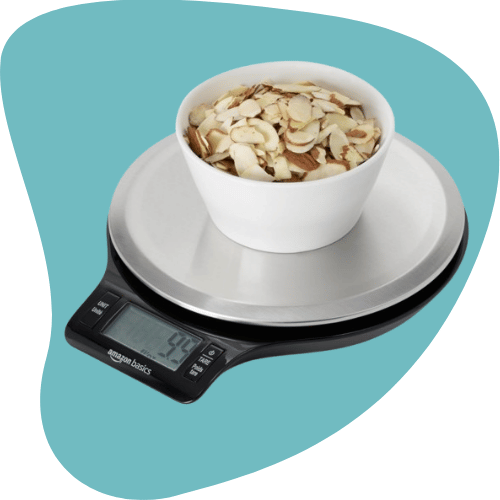
Amazon Basics Digital Kitchen Scale — Stainless Steel Platform, LCD Display, Tare Function, Up to 11 lb Capacity (Batteries Included)
Compact and accurate digital kitchen scale featuring a stainless-steel platform and a large LCD for easy readability. Measures up to 11 lb (≈5,000 g) and supports tare, as well as multiple units (g / oz / ml / fl oz), for precise baking and meal prep.
Batteries included — ready to use right out of the box.

- Silicone molds + mini muffin tin — perfect for fat bombs and portion control. King Arthur recommends silicone for many sweet bakes. (55)
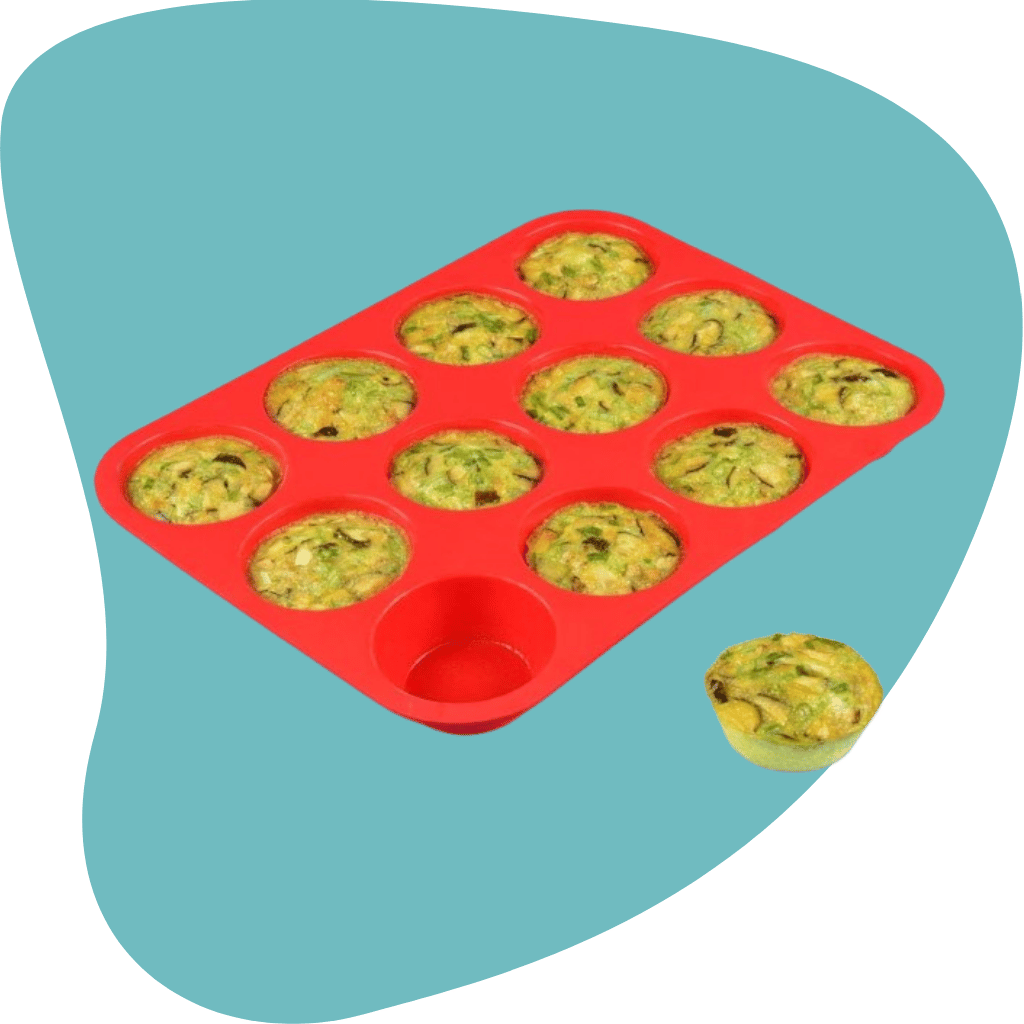
CAKETIME 12-Cup Silicone Muffin Pan — Regular Size, Nonstick
Flexible 12-cup silicone muffin pan that makes cupcake and muffin removal effortless — no greasing needed for most recipes.
Heat-safe and oven-ready for everyday baking, plus dishwasher-, freezer-, and microwave-safe for simple cleanup and storage.
Durable, food-grade silicone with even heat distribution — ideal for home bakers, parties, and meal prep.

- 8–9″ springform pan — the workhorse for cheesecakes and tarts. Use foil for water baths.
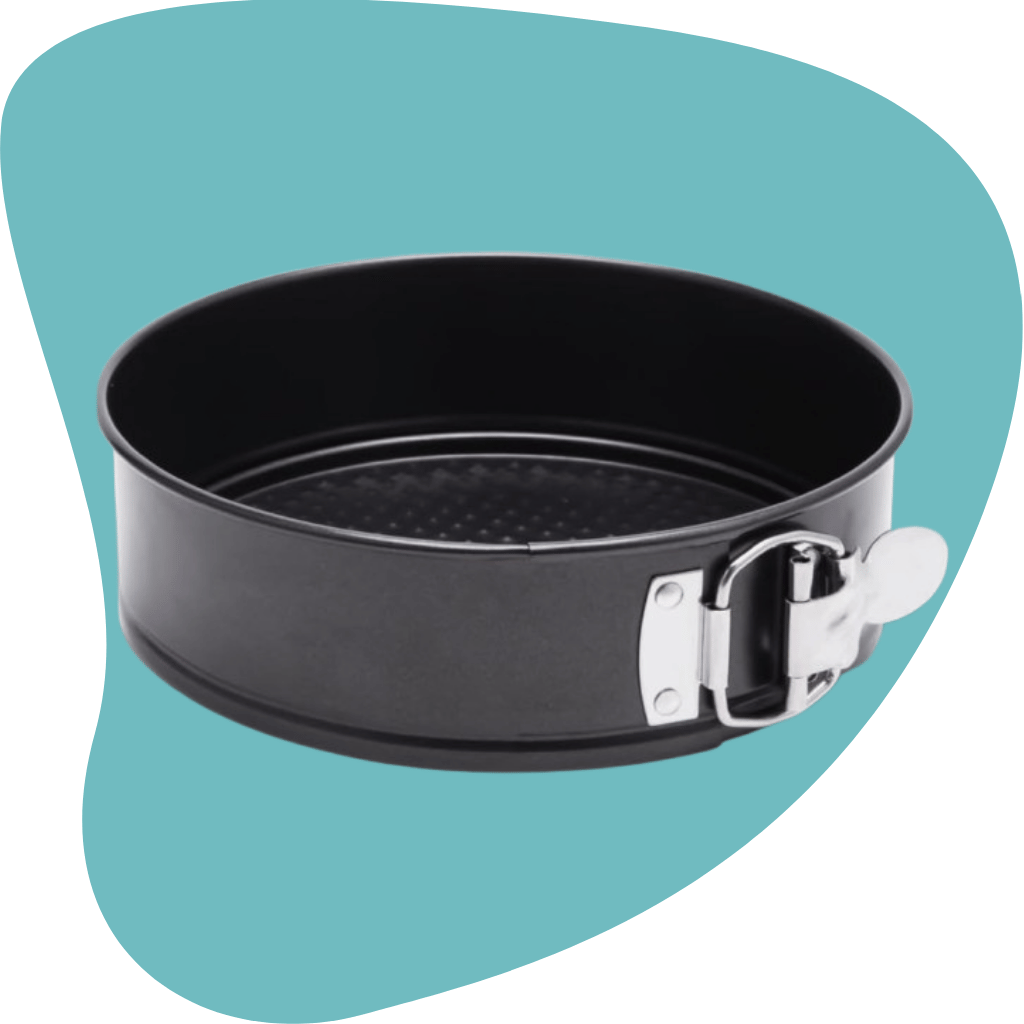
Hiware 9″ Non-Stick Leakproof Springform Cheesecake Pan — Removable Bottom, Honeycomb Base, Oven-Safe to 450°F
Deep 9″ springform with a removable base and spring-lock buckle for easy release; honeycomb/fluted base helps even heat distribution and serving. Double nonstick coating and a “leakproof” design — many listings state it’s oven-safe to 450°F, but independent tests/reviews report mixed results for the latch/seal in water-bath situations. Great for cheesecakes, quiches, and layered desserts — sturdy construction for regular use; hand-washing is usually recommended to protect the coating.

- Ice-cream maker (compressor or bowl type) — if you make frozen desserts often, a reliable machine improves texture; allulose + custard methods make scoopable keto ice cream. See expert tips on avoiding icy texture (blend sweeteners + fat). (56)
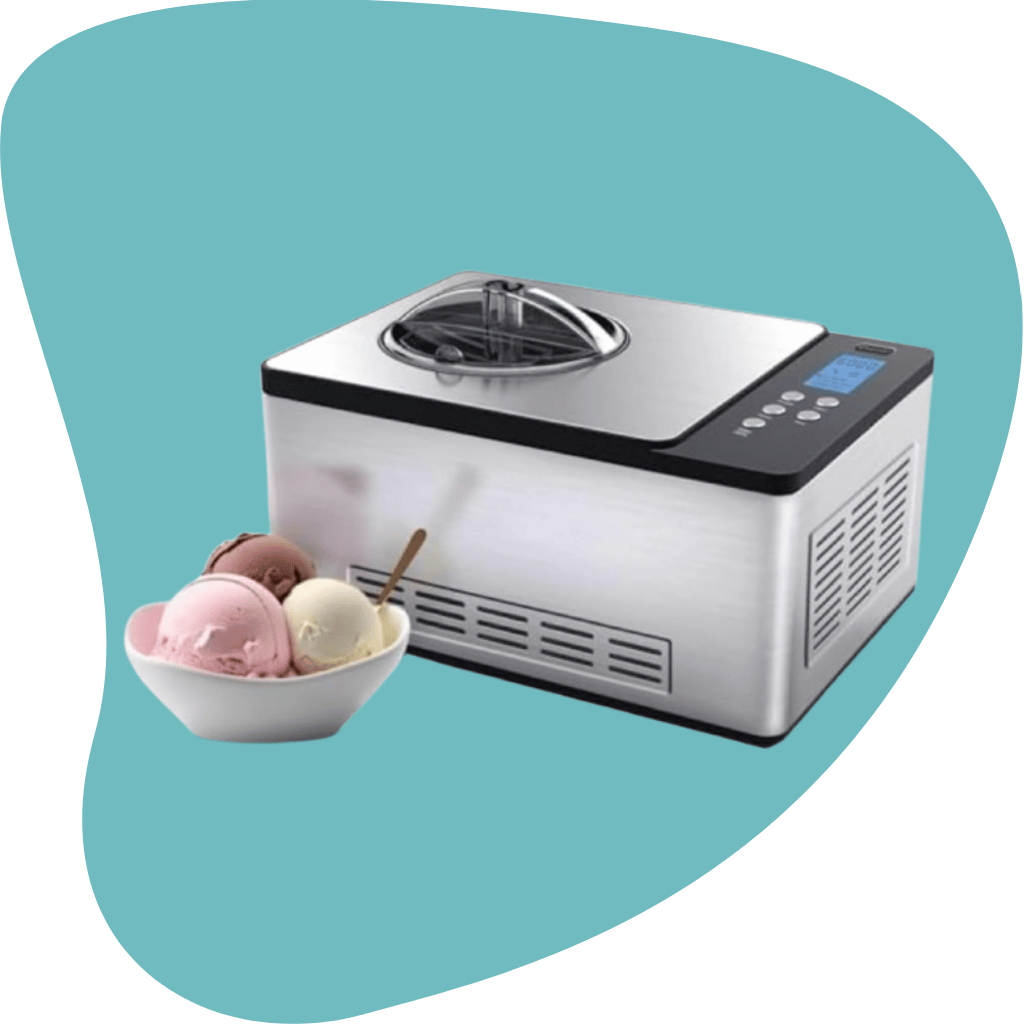
Whynter Ice Cream Maker Machine (ICM-200LS) — 2.1 qt | Built-In Compressor | Stainless Steel | LCD Timer
Automatic stainless-steel ice cream maker with a 2.1-quart capacity and an internal compressor — no pre-freezing required, so you can churn ice cream, gelato, or sorbet on demand.
Touch/LCD digital controls with an integrated timer; the machine typically freezes a batch in ~30–60 minutes, and includes a removable mixing bowl and churn blade for easier cleaning.
Sturdy stainless housing with extended-cooling and motor-protection features for consistent results and reliable operation on the countertop.

- Hand/stand mixer & whisk — for stable whipped creams, mousses, and creamed fillings.
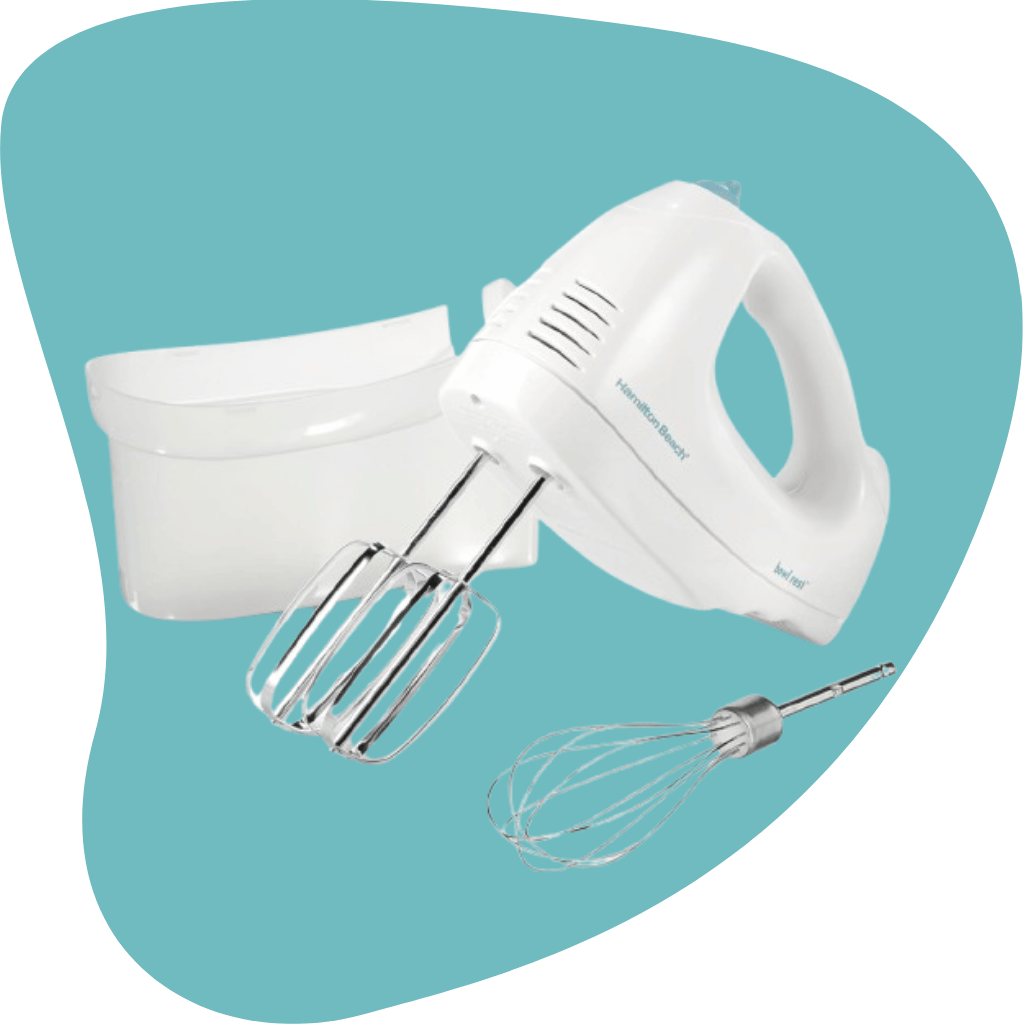
Hamilton Beach 6-Speed Electric Hand Mixer — 250W | QuickBurst™ | Snap-On Storage Case (White)
Lightweight 6-speed mixer with a QuickBurst™ power boost and 250 watts peak power — includes two traditional beaters and a whisk for mixing, whipping, and light dough.
Snap-on storage case keeps attachments organized and prevents lost beaters; Bowl Rest™ and a nonskid heel add stability while you prep.
Easy-clean attachments are dishwasher-safe, so cleanup is fast — a reliable, budget-friendly choice for everyday baking and cooking.

- Kitchen torch — for crème brûlée and finishing touches.

Sondiko Butane Torch with Fuel Gauge S907 — Refillable, Adjustable Flame & One-Hand Operation
Compact refillable butane torch with a built-in fuel gauge, thumb-reachable flame regulator, and lock for easy one-handed use — great for crème brûlée, searing, soldering, resin art, and light welding.
Automatic ignition, safety lock, and adjustable flame control let you dial in precise heat; butane fuel is not included — fits standard small butane canisters.
Budget-friendly and versatile (recommended as a solid value in kitchen-torch roundups), suitable for culinary and hobby use — follow all safety instructions when operating.

- Immersion blender or high-speed blender — best for silky mousses, purees, and avocado ice cream. (High-speed blenders also help powder erythritol if needed.) (57)
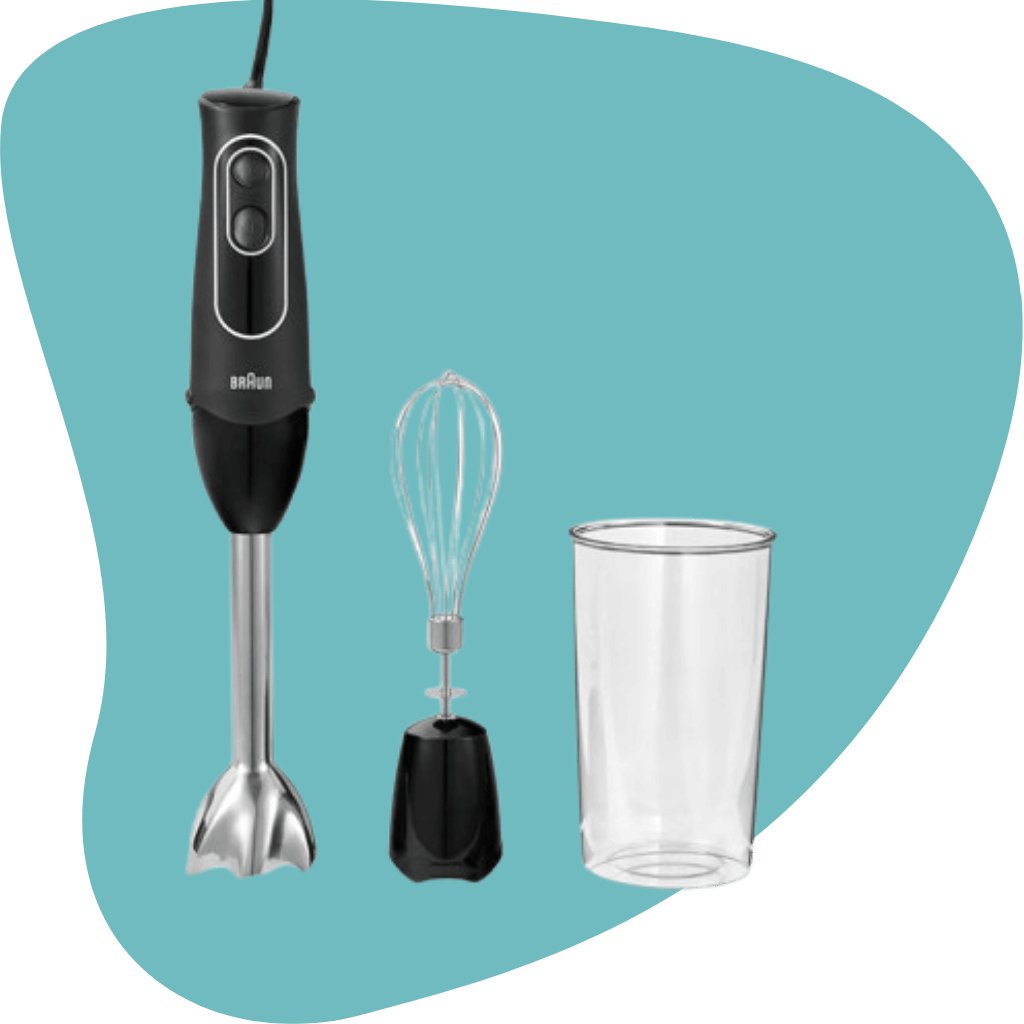
Braun MultiQuick 5 Immersion Hand Blender — 350W | Dual-Speed + Turbo | Whisk & 20 oz Beaker Included (Black)
Powerful 350-watt immersion blender with Braun’s PowerBell VPlus splash-control head for smoother blending and less splatter.
Dual-speed control with Turbo boost, ergonomic soft-grip handle, stainless-steel shaft, and dishwasher-safe detachable parts — includes whisk attachment and 20 oz beaker.
Compact and durable for soups, sauces, smoothies, baby food, and everyday kitchen tasks — well reviewed for ease of cleaning and reliable performance.

- Fine mesh sieve — strains purees (removes seeds for smooth berry fillings).
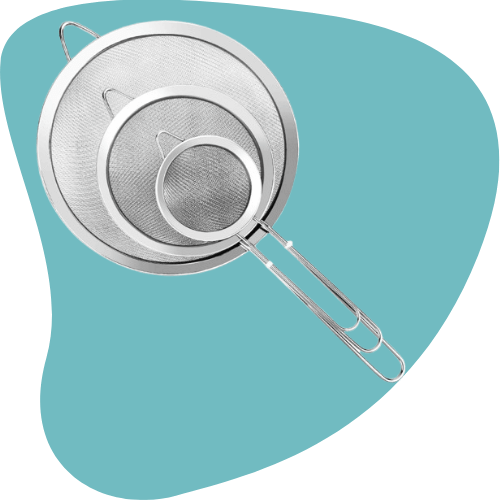
3-Piece Super Wire Extra-Fine Mesh Strainer Set — Stainless Steel (Small, Medium, Large)
Ultra-fine 3-piece stainless steel mesh strainers (≈3.15″, 5.5″, 7.87″) perfect for sifting flour, rinsing quinoa, straining juices, and catching fine particles. Made from food-grade stainless steel with sturdy handles and hanging loops; dishwasher-safe for easy cleanup. Versatile everyday tool for baking, sauces, stocks, and dusting powdered sugar.

- Silicone spatulas, offset spatula, ramekins, and ramekin lids — small tools that make finishing and portioning professional.

5-Piece Silicone Spatula Set — Food-Grade, Ergonomic Handles, Heat-Resistant up to 600°F
Compact 5-piece silicone spatula set with upgraded, ergonomic handles — ideal for scraping, mixing, folding, and folding bowls or pans. Made from food-grade, BPA-free silicone with a sturdy core for control; dishwasher-safe and safe for nonstick cookware. High-heat performance (commonly rated up to 600°F for quality silicone spatulas), so they resist warping or melting during typical cooking and baking.

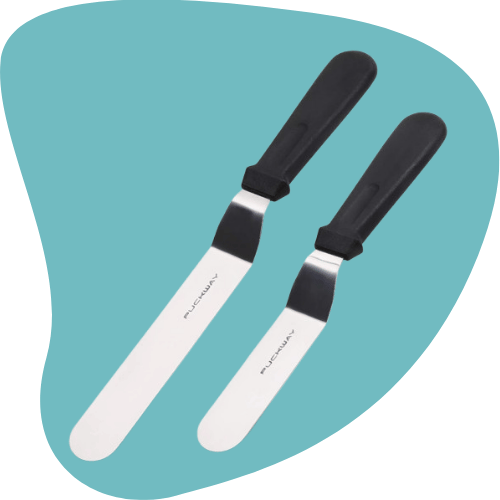
Angled Icing Spatula Set — 2-Piece Stainless Steel Offset Cake Spatulas
Set of 2 offset icing spatulas with 6-inch and 8-inch stainless steel blades — perfect for frosting cakes, cupcakes, and desserts with smooth precision. Durable, food-grade blades paired with comfortable black handles for steady grip and easy control. Ideal for spreading icing, lifting delicate layers, or smoothing batter — a must-have tool for home bakers and cake decorators.

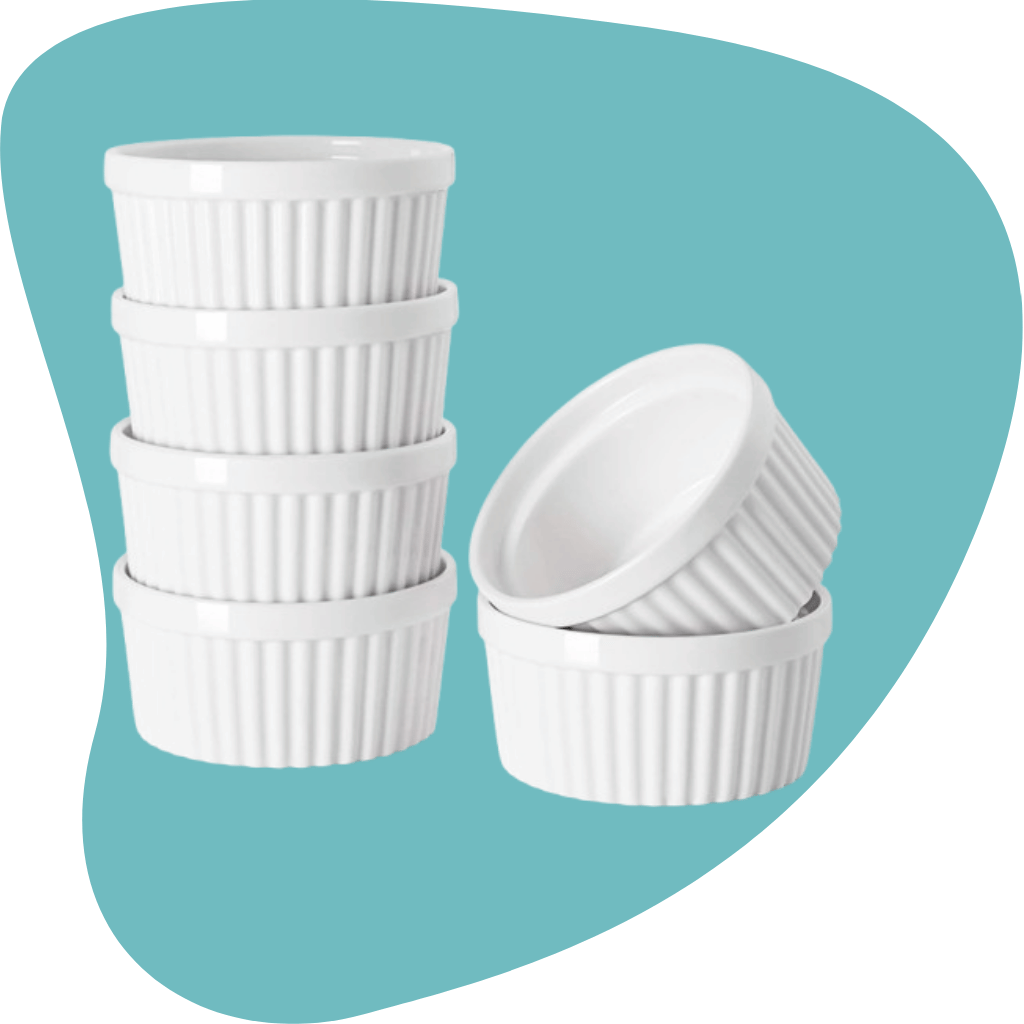
DOWAN 4-Oz Porcelain Ramekins — Set of 6 Oven-Safe Custard Cups (Soft White)
Deep, classic porcelain ramekins (4 oz capacity) — set of 6, perfect for crème brûlée, soufflés, dips, and individual desserts.
High-fired, lead-free porcelain that’s oven-, microwave-, freezer-, and dishwasher-safe for everyday use and easy cleanup.
Stackable, elegant design that’s great for baking, serving, and mise-en-place — a top mini-ramekin pick in independent roundups.

Optional pro upgrades: ice cream scoops (Zeroll style), vacuum sealer (longer shelf life for mixes), and an accurate oven thermometer.
Apps, trackers
These help with labelling, net-carb mat, and troubleshooting.
- Carb Manager — set keto goals, track net carbs (auto-handles fiber, sugar alcohols & allulose options) and scan barcodes. Great for recipe net-carb verification. (58, 59)
- King Arthur Baking — practical keto baking guides, flour substitution notes, and tools.
- Healthline / Cleveland Clinic / Medical News Today — easy, reliable overviews of sweeteners (erythritol, allulose, maltitol) and their effects. (60)
- Serious Eats — technique guides (gelatin, custards, panna cotta) to avoid common texture issues.
Storage, shelf-life & prep tips
- Fat bombs / frozen treats: freeze in portion molds; transfer to an airtight container with parchment layers and label date — typically 2–4 weeks for best quality (shorter if dairy-based).
- Baked goods: store airtight in the fridge for 4–7 days, depending on dairy content; some almond-flour cookies freeze well for up to 3 months.
- Sweeteners & flour: keep almond & coconut flours refrigerated or frozen once opened (especially in warm climates) to prevent rancidity. Store erythritol/allulose in a cool, dry place.
- Pre-mixes: create a “keto baking mix” (almond flour + a bit of coconut flour + a pinch of baking powder) and label it for quick mug cakes or pancakes.
Quick starter shopping list
Almond flour; coconut flour; unsweetened cocoa; powdered allulose; erythritol/erythritol-monk fruit blend; blanched almond meal; butter; cream cheese; heavy cream; eggs; vanilla extract; gelatin; xanthan gum; psyllium husk; nuts & seeds; sugar-free chocolate chips; digital kitchen scale; silicone molds; springform pan; immersion blender; ice-cream maker (optional).
The Bottom Line
Keto desserts let you enjoy sweets without blowing your carb budget—if you plan portions, pick low-impact sweeteners (erythritol/allulose/monk fruit blends), and use smart swaps (almond-flour crusts, gelatin for set desserts, psyllium for structure). Always show per-serving net-carb math on recipe cards (e.g., Net carbs = total carbs − fiber − erythritol/allulose when applicable) so readers can decide what fits their goals. For people managing blood sugar, test-and-learn (measure before and ~60–120 minutes after a new recipe) and be conservative with sugar alcohols like maltitol.
FAQs
1) Can I make keto desserts for guests who aren’t following keto?
Yes—many keto desserts taste indulgent and will please most guests if portioned and presented well. Keep slices thin (tiny, elegant portions), offer a small non-keto topping (e.g., a berry) on the side, and label them clearly so carb-counting guests know what they’re eating. For casual dinner parties, make one keto option and one conventional dessert to satisfy everyone.
2) How do I convert a regular dessert recipe to keto without wrecking texture?
Follow three rules:
- Replace sugar with a blend (allulose + erythritol or a monk-fruit/erythritol blend) to mimic bulk and browning;
- swap wheat flour for almond flour (1:1 starting point) or use ¼ volume coconut flour with extra eggs/liquid;
- Add a stabilizer where structure matters—gelatin for chilled desserts, egg yolks for custards, psyllium for breads. Test small batches and weigh ingredients (grams) for consistency.
3) Are keto desserts safe for children?
Most keto desserts are safe, but not always ideal as everyday treats for kids. They’re calorie-dense (fat-heavy) and often use sugar alcohols that can cause gastrointestinal upset in sensitive people. For occasional treats, keep portions small and prefer natural-food approaches (e.g., small-berry toppings, nut-based bars). If a child has diabetes or metabolic concerns, consult their clinician before introducing sugar alcohols or concentrated fat bombs.
4) Which sweetener is best if I’m tracking blood glucose closely?
Allulose and erythritol have the best evidence for minimal glycemic impact in most people; many clinicians and tracking apps treat erythritol and allulose as subtractable in net-carb math. Still, individual responses vary—if you’re insulin-treated or very glucose-sensitive, test small amounts and monitor your glucose. Carb Manager and some diabetes resources offer conservative net-carb calculations (e.g., subtracting fiber and allulose but only half or none of certain sugar alcohols), which you can use to be safer.
5) If I’m trying to lose weight, will keto desserts derail progress?
They can—only if they push you over your calorie or carb targets. Systematic reviews show low-carb diets often produce similar long-term weight loss to other diets when calories are matched, so desserts don’t have magical effects either way. Treat keto desserts as treats: use mini portions, count the calories and carbs, and track for a week if weight loss stalls. If you notice plateauing, reduce portion size or frequency before abandoning dessert entirely.



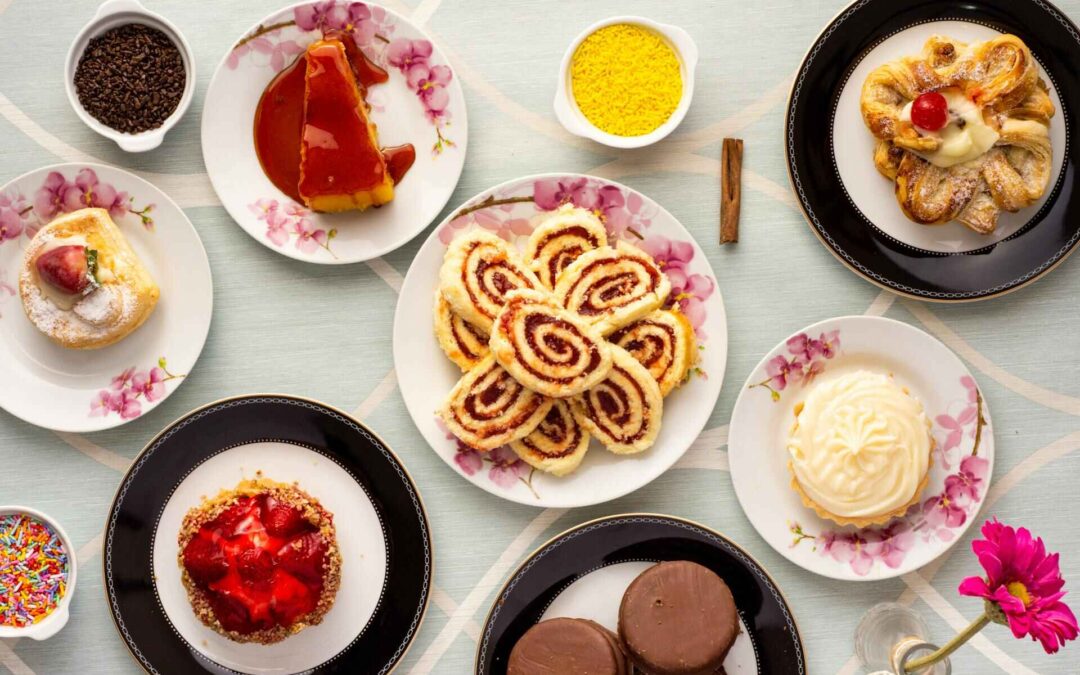


I was very pleased to find this web-site.I wanted to thanks for your time for this wonderful read!! I definitely enjoying every little bit of it and I have you bookmarked to check out new stuff you blog post.
Thank you so much — I’m really glad you enjoyed the read! 💛 I appreciate you taking the time to leave such a lovely comment and for bookmarking the site. If there’s a topic you’d like me to cover next, let me know — I’d be happy to write about it. Thanks again for the support!